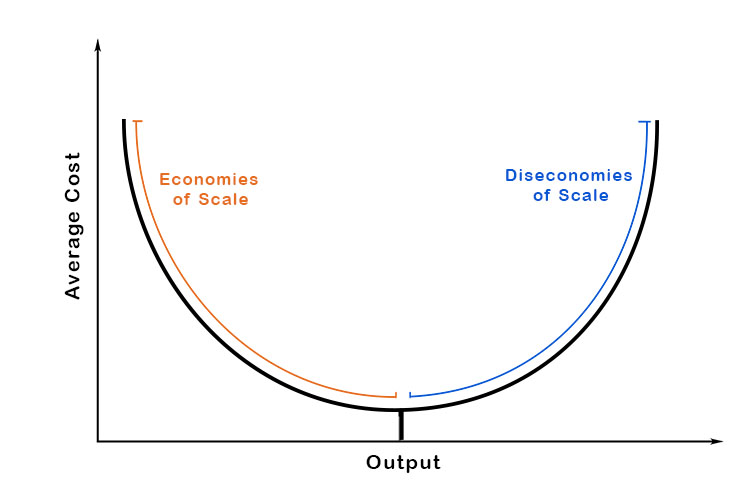diseconomies of scale – when a business grows too large leading to a possible increase in unit cost
Now that we know the meaning of economies of scale, it's important to learn what happens when these economies of scale no longer function for a company, creating a disadvantage.
Think of disadvantage and economies of scale = Diseconomies of Scale

Diseconomies of scale is when a company’s average costs increase as output increases. This is the opposite of economies of scale, where average costs decrease and output increases. There are a number of reasons why diseconomies of scale can occur. One reason is that as a company grows to be huge, it can be difficult to manage. This can lead to inefficiencies and waste. Another reason is that as a company grows, it may have to invest in more expensive equipment and facilities. This can also lead to higher costs. As a large successful company, competition will be rife and can possibly take away market share, driving down profits.
Diseconomies of scale often result from poor leadership and decision making. An example of diseconomies of scale negatively effecting a company is General Motors. Poor leadership and complacency ultimately led to the automotive giant filing for bankruptcy in 2009. Foreign automakers saw GM as an easy target, and produced better cars for lower prices. The complexity in which GM was structured also led to huge amounts of financial waste and difficulty in managing operations.
A smaller example of diseconomies of scale first sees a carpet company doing very well with small runs of carpet for individual clients. They purchased a large factory and bought some giant machines. They initially had enough money to buy themselves into the larger market place and sell large amounts of carpet at a low price. This was not sustainable but new customers got to know that their product was available. They then increased the price, but very few customers bought the carpets. Further competition from foreign companies with low labour costs, no rates, little health and safety, and very low taxes drove prices down, meaning the carpet company couldn’t be profitable and subsequently went bankrupt. In hindsight, the carpet company realised it was a diseconomy of scale to have increased in size. With about the same number of employees, but far higher machinery costs, the costs per carpet per machine increased substantially.
Another small example is a coffee shop that had five employees serving 40 customers per hour. The coffee shop owners took on two more staff in the shop to make coffee because there was always a queue outside the shop. Now they were all able to serve 42 customers per hour. More customers were being served, but the number of coffees each employee made on average per hour reduced. Working in a tiny area and getting in the way of each meant taking on more staff made the business less efficient. The cost per cup made increased, not decreased.




